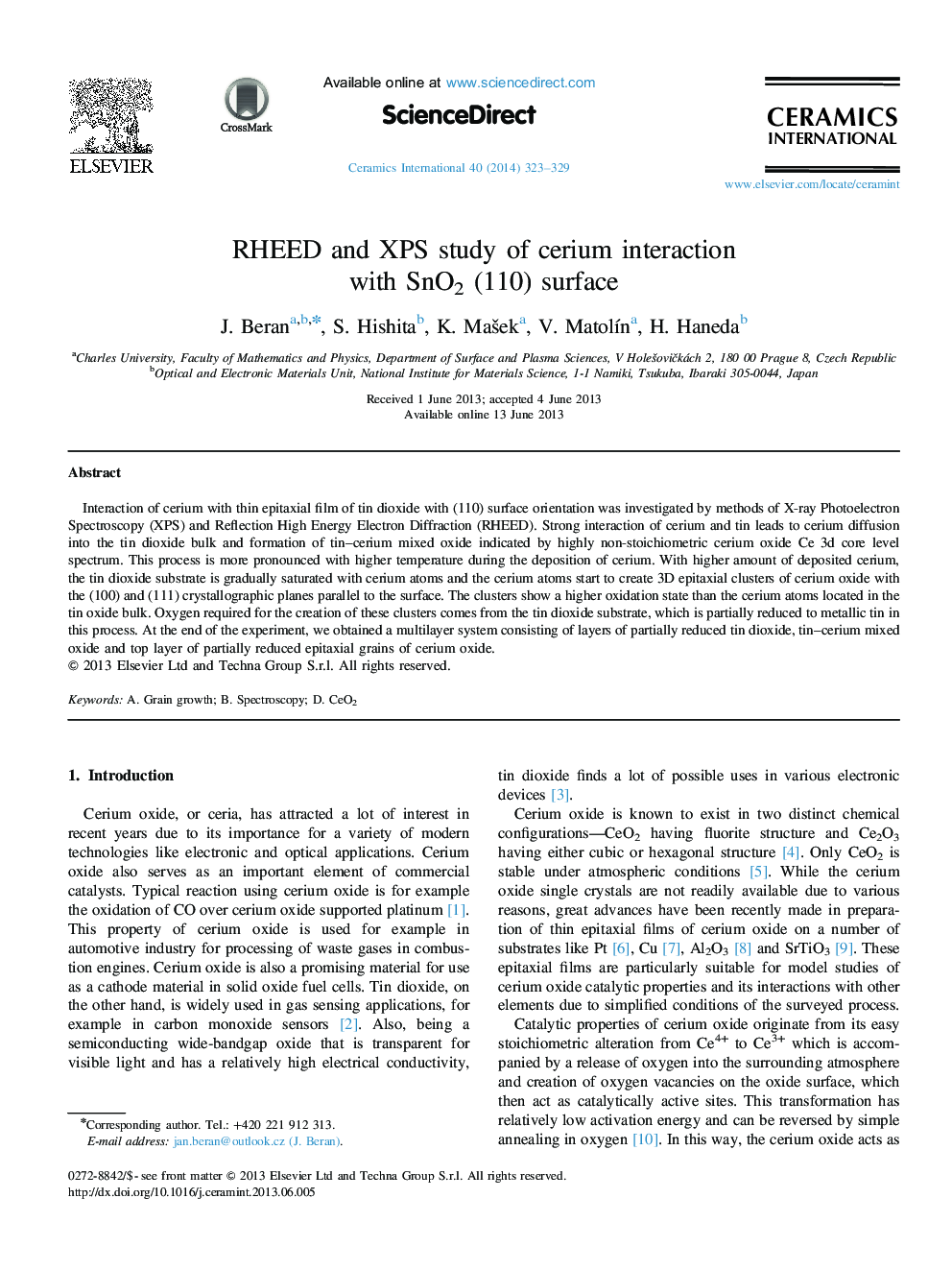| کد مقاله | کد نشریه | سال انتشار | مقاله انگلیسی | نسخه تمام متن |
|---|---|---|---|---|
| 1462264 | 989629 | 2014 | 7 صفحه PDF | دانلود رایگان |

Interaction of cerium with thin epitaxial film of tin dioxide with (110) surface orientation was investigated by methods of X-ray Photoelectron Spectroscopy (XPS) and Reflection High Energy Electron Diffraction (RHEED). Strong interaction of cerium and tin leads to cerium diffusion into the tin dioxide bulk and formation of tin–cerium mixed oxide indicated by highly non-stoichiometric cerium oxide Ce 3d core level spectrum. This process is more pronounced with higher temperature during the deposition of cerium. With higher amount of deposited cerium, the tin dioxide substrate is gradually saturated with cerium atoms and the cerium atoms start to create 3D epitaxial clusters of cerium oxide with the (100) and (111) crystallographic planes parallel to the surface. The clusters show a higher oxidation state than the cerium atoms located in the tin oxide bulk. Oxygen required for the creation of these clusters comes from the tin dioxide substrate, which is partially reduced to metallic tin in this process. At the end of the experiment, we obtained a multilayer system consisting of layers of partially reduced tin dioxide, tin–cerium mixed oxide and top layer of partially reduced epitaxial grains of cerium oxide.
Journal: Ceramics International - Volume 40, Issue 1, Part A, January 2014, Pages 323–329